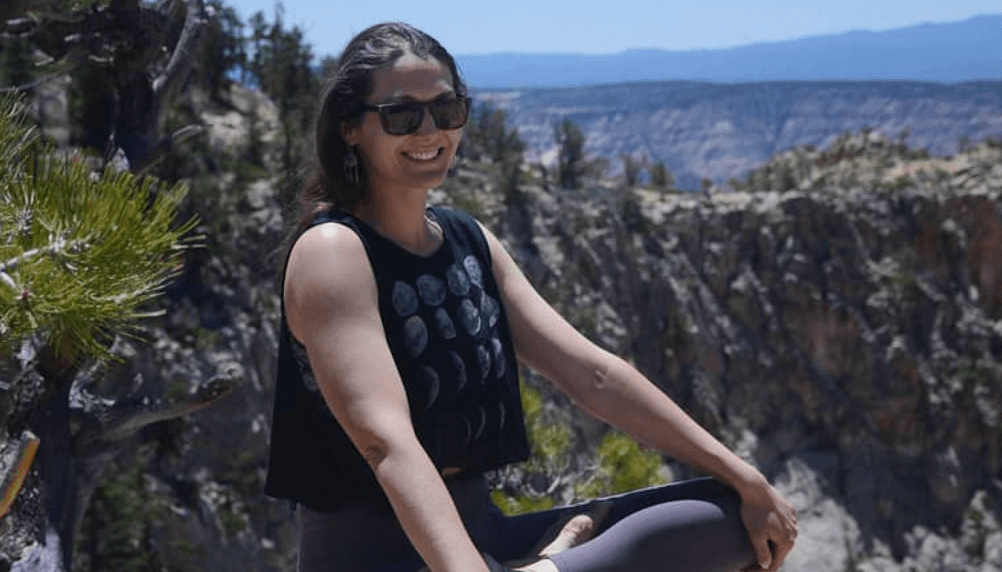The yoga class is winding down and you finally hear your yoga instructor say, “Now for our final pose… Savasana.” And you and everyone else in the class release a little internal sigh of relief.
Savasana can be loved or hated depending on the day or your personality; some people love the relaxation and just want to fall asleep, others want savasana to end as soon as possible.
But why do we even do savasana at the end of each class and why is it considered so important? Read on below to find out everything you need to know about this magical pose.
What is Savasana or Corpse Pose?
Savasana or Corpse Pose is a yoga pose performed at the end of every yoga class. It is considered a “restorative” yoga pose as it works to calm the body and restore it to its optimal state.
The Sanskrit word Savasana comprises of two words; “shava” meaning corpse,” and “asana” meaning pose.
It is performed by lying flat on the back with the feet slightly splayed and hands by your side with palms open toward the sky. Practioners let the body sink into the mat and lay still for a few minutes to rest after a yoga class.
The goal is to simultaneously relax the body while maintaining total-body awareness; this is not a pose meant for falling asleep (though many people do!)
It is a pose of ultimate surrender and has many benefits. Despite it seeming very “easy,” it is quite difficult because you must quiet the mind and remain still.
Savasana is best described as mindful rest.
Why Is Savasana The Most Important Pose After A Yoga Session?
Letting the body rest in Savasana Pose after yoga or any workout allows the body to fully integrate the physical exertion of the workout.
Practicing a Savasana Pose at the end of every yoga class also lets the nervous system slow down.
The pose allows your body time to “digest” the yoga practice, letting all the stretching sink into the muscles before we get up off the mat and begin moving again.
It’s also a chance to set an intention and to bring peace to the rest of our day.
Why Is Savasana The Hardest Yoga Pose?
Some yogis consider this seemingly easy pose as one of the hardest, simply because it’s a pose lacking movement. And yes, many of us these days have a hard time sitting still.
While in this pose, our minds can wander or we may get “antsy.” Ideally, we are meant to focus on the body and bring ease to any tension that may be leftover after the yoga practice.
This pose can be particularly difficult for people with ADHD, or if you are angry or upset. This pose is a great teacher as it can show us our weak points in regards to relaxation and patience.
How Long Should You Hold Savasana?
Savasana Pose is most beneficial when you stay in the pose for at least 3 to 5 minutes. Some practitioners claim a real Savasana is 10 to 20 minutes long.
Any amount of relaxation at the end of yoga or even a strength-training workout is going to greatly benefit the body and further enhance the results of the workout.
Aim for at least a 3-minute Savasana Pose at the end of each practice.
What Are The Benefits of Savasana?
Savasana gives your body a chance to bring the heart rate and breath back down to their normal rate.
Organs can also recover and come to homeostasis. Savasana is especially important after high-exertion exercises like Power or Hot Yoga and HIIT workouts. Savasana gives our bodies the proper recovery it needs.
Allowing ourselves to come to a complete rest in Savasana after a high-powered workout will also give the rest of our day a sense of peace and calm.
Many people who practice yoga know about the “Yoga High” that you get after class. This high might well be kick-started by the Savasana Pose because we are allowing ourselves to slow down and feel it.
Other benefits of Savasana Pose may include:
- Lower blood pressure
- Better mental health with regular practice
- Reduced tension in the body
- Improved focus
- Potentially help with insomnia, digestion, and increased immunity
Is Savasana Meditation?
Savasana Pose is considered a type of meditation because we must keep a high level of awareness throughout the pose. In this pose, we are trying to quiet our “monkey mind,” and bring ultimate relaxation to our physical selves.
Meditation can happen in any sort of pose, Savasana being one of them. Meditating regularly has many benefits which is another reason to practice Savasana at the end of each yoga practice and workout.
Meaning And Symbology Of Savasana Pose
Yoga can be a very spiritual practice for some, and many of its poses evoke symbology like Warrior Pose, Tree Pose, and Half-Moon Pose.
Savasana Pose comes at the end of a yoga class, that yoga class representing a life. At the end of our movement, we die, only soon to be reborn again.
Within the pose of Savasana, our bodies fall to the wayside and we are only left with our consciousness, a symbol of the circle of life. When we are slowly waking our bodies back up, it symbolizes being reborn, with many practitioners pausing in the fetal position just before arising.
Practicing Savasana Pose is a reminder to enjoy every moment and live life to the fullest.
How do you practice Savasana Pose and how does it make you feel? Leave your comments below!



0 Comments